REVIEW – Polyphony Digital can’t be rushed. The flagship car simulation license since its inception in 1998, each opus is meticulously built step-by-step by Kazunori Yamauchi’s team, and each release is a small event. Almost five years after Gran Turismo Sport, Gran Turismo 7 is now here, at the end of the PS4’s lifecycle and the first stage of PS5’s. An episode that clearly returns to its roots has done both good and sometimes bad. “Always on the yellow brick road!” – sang the heroes of The Wizard of Oz, and it’s true of GT7’s more conservative game design.
Gran Turismo 7 sets the “tone” with the usual introductory movie: a long video that traces the entire history of motorsport, with stunning archive footage. It’s a chance to get a feel for the passion for cars and their history that drives Kazunori Yamauchi and his team. After Gran Turismo Sport, which focused on multiplayer, we get the feeling that the developers wanted to return to the origins of the license. Because if GT7 does one thing perfectly, it’s undoubtedly amping our passion for cars, and perhaps a little too much of it.
A penniless man’s start
At the very beginning of the game, you start from scratch: almost “penniless”, you have to choose a second-hand car from a very tight budget of 20 000 credits. Obviously, Japanese city cars are in the spotlight, and you have a choice of Mazda, Nissan or Honda. This is an opportunity to point out one of the game’s shortcomings: the car catalogue. It’s not so much the number of cars available (420 in total, 80 more than in GT Sport), but the variety that’s lacking. By this, I mean that many of them are only model variants (not counting the Nissan GTR models), not to mention vehicles that are certainly fun but useless for pure fun and driving, such as the Volkswagen Combi van. Fans of Japanese sports cars from the 90s will undoubtedly be satisfied, but it’s a bit thin on the ground for Europeans. Some essential brands are even missing, such as Volvo. Fortunately, all the cars have perfectly modelled interiors and stunning looks, thanks to the fantastic attention to detail.
Each brand has its own showroom where cars after 2000 can be bought, but they also have their own museum that traces the main stages in the brand’s life. You can even watch short videos showing the flagship models in “Turbo” style. But the game is also aimed at the tighter budget or “youngtimers”: the novice amateur. The second-hand market, which is renewed at random (but not on every visit), offers all pre-2000 models. Developers have even gone so far as to include the mileage on the odometer of every used car. While the rotation of vehicles is undoubtedly a good idea, it gives the impression that we’re regularly scanning the ads on the Good Catch to find our rare gem finally. A bit frustrating…
With a bit of goodwill, it could be said that Polyphony Digital has chosen quality over quantity, and it’s also true that the developers have promised to add regular updates to the list. But since Gran Turismo is primarily a car simulation game, not a museum, we wanted more racing cars.
The -almost- Real driving simulator
This somewhat rigid museum atmosphere is also felt in the racing. Although perfectly modelled from the outside, the vehicles look too “clean” to be authentic. The same applies to the tracks, which are very well drawn but still lack life. Unlike some of its competitors, Gran Turismo still struggles to convey that heady feeling of petrol and burnt rubber that everyone who has ever stepped on (or put wheels on) a racetrack knows well. Sometimes it looks more like a pretty postcard than a race track, and while the graphics are really nice, the lack of simple things like the animation of spectators or the wind blowing through the branches of trees is frustrating.
We would have liked to interact more during the race, for example, with our radio engineer, as we did during the race. As far as the sound is concerned, the series still has its flaws, namely the excessive tyre screeching, which also sounds erratic in the rain, the engine sounds that lack a bit of character (the sound mixing between our vehicle and the competitors’ sounds are sometimes bizarre), or the still equally ridiculous sounds of cars hitting each other or landmarks. Speaking of crashes and collisions, we need to talk about the depiction of damage, which is simply… lacking. Flaws that will stain the “real driving simulator” in 2022.
Collective tuning
As for multiplayer, GT 7 offers a local split-screen mode and an online mode, “Sport”. As the name suggests, this mode is taken directly from Gran Turismo Sport. Races are offered every twenty minutes, allowing you to increase your racing ranking. At the same time, we will also be able to participate in championships spread over several races, but we could not test this mode before the official launch. Anyone who has been on the GT Sport circuit will quickly find their place. Of course, it’s still possible to create your own lobbies to meet up with your friends. A new feature is the “Showcase” mode, a sort of community HUB where you can admire paintings, photos and replays from other players around the world.
To get the best times, you need to be a professional driver. Of course, habits help as part of the game, but they tend to slow your car down. Fortunately, Gran Turismo makes up for it in terms of pure driving experience, as Polyphony’s latest title continues to offer precise and demanding driving. This allows beginners to enjoy the game while taking care of their track, significantly compromising victory. The game also explains essential concepts, such as the difference between traction and propulsion or the out-in-out-out principle for cornering. Visual aids are also available to help you evaluate braking points and tracks.
“Muscle cars” preferred
Of course, the driving experience can be thoroughly enjoyed with more muscular cars. In corners, you can feel the weight of the car and the weight transfer, and you need to know how to use the accelerator to avoid losing the rear end when exiting a corner. A special mention should be made of the meticulous handling of the brakes, a little too much pressure on the trigger or pedal and the wheels lock, which is a sign of understeer at the start of a corner and often on straights. Tyre handling is also an important factor in longer races, and braking must be handled with care if you don’t want to destroy tyres at high speed. The difference between front-wheel drive and rear-wheel drive is very noticeable, and driving old rear-wheel-drive cars such as the 1969 C3 Corvette is extremely enjoyable, even with a conventional controller counter-steering management particularly well managed. You get into the race, and once you’ve got it right, you’re ready to take corners with the throttle-brake-throttle system. Be careful, though, in the rain, the older cars can quickly become difficult to control, especially with the joystick. Therefore, it is advisable to set the traction control to gear 1 to avoid frequent spins.
PS5’s DualSense is great for passing through different terrains, which is perfectly felt, and it’s not uncommon to lose the rear end in a corner when accelerating back too hard. The steering wheel and pedals are obviously more precise, but the joystick handling is also excellent. DualSense’s vibrations are perfectly exploited to feel the slightest unevenness on the track and even the heartbeat of your driver in the really tricky moments.
The only drawback is the number of available cameras, which has not improved. There is still the exterior camera, bumper view, bonnet view, and the cockpit camera. If the interiors are superbly well modelled, it’s a pity you can’t always enjoy them to the full with the free camera on the right stick. Another point that still leaves this patinaed series stuck in the past.
A bit sterile, but overall a nice, aesthetic view
While there are no revolutionary changes in the visuals, the game is all in all quite spectacular. Although the graphics engine is still noticeably GT Sport (cross-gen is a must), the overall look is nice and exciting. The lighting effects are particularly well done. Dynamic weather and day/night cycles are also present, and sunrise and twilight allow us to enjoy excellent handling of shadows in real-time. The shift from shadow to day from turn to turn depending on the sky and clouds is particularly striking. So the aforementioned “postcard effect” is where it works brilliantly…
We strongly recommend visiting the menus to ease the information overload on the HUD and to lower the music volume, which is too loud by default (to the point of masking engine noise). Some minor details add to the realism, such as pieces of rubber that pile up on the track as the race progresses or sectors that are wetter than others when the rain appears. This makes you want to look for the best tracks and avoid puddles where possible.
The circuits are also very varied, with the return of original circuits from the licence, such as the Fuji High Speed Ring and the Tokyo Expressway, and real circuits such as Suzuka, Spa Francorchamps and Interlagos. In total, there are 29 tracks to satisfy all types of riders. And to admire our performances, replays are part of the game, more beautiful than ever.
This is not Forza Horizon…
Polyphony Digital has made no secret since the beginning of the game’s communication: in a sense, GT7 is the latest evolution of a familiar formula: a synthesis of classic progression and the new direction GT Sport brings. Like a fine wine, it is a game that will continue to ‘mature’ over time. In other words: progression in the game works in the familiar, classic way. You start in “World Circuits” mode, divided into three regions of the world (America, Europe and Asia), with small cars in the Sunday Cup and Clubman Cup categories before moving on to the higher categories. It’s an entirely different philosophy to Forza Horizon 5, which was packed with content and cars from the first minutes. Here you have to earn credits by driving to get the car of your dreams finally. This philosophy can even be felt in the menus and the game’s interface, which is just as tasteful and ‘aristocratic’, while pleasant, subtle jazz music plays in the background. Therefore, we are a far cry from FH5’s constant blaring of pop and rock music. However, loading times are a little slow despite the PS5’s magical SDD.
Although the first races are pretty flat, with compact cars with limited performance, once you reach 100,000 credits (based on an hour of play), you can start targeting slightly more muscular vehicles like the Toyota Supra or Chevrolet Corvette. For the less experienced, the first few hours of Gran Turismo 7 aren’t exactly the most exciting, and this can be discouraging.
Especially because the race formats don’t change: you always start last in the rolling start and work hard to get up. This means that there is no real fight on the track. That’s understandable in pure arcade games like Sega Rally, where it’s a commonplace, but much less so in a simulation. You’re rarely neck and neck, and you’re seldom chasing your competitor for a hundredth of a second. Not to mention that victory quickly becomes illusory once you lose a little time behind your competitors at the start of the race. And there’s no “rewind” feature here. The basic events quickly become boring despite the gradual exploration of new routes.
Fortunately, mini championships and special races (such as endurance) add a bit of variety and challenge. Of course, freedom lovers or solo players will have the option to run a personalised race or beat the clock in the traditional Arcade and Time Trial modes.
Good AI, bad AI
Artificial intelligence is another question that is always on everyone’s lips when a new episode of Gran Turismo is released. While there has been some improvement over the last few episodes, there is still room for improvement in AI. The AI still seems a step behind your reactions and often drives as if it hasn’t noticed you. The drivers are not very aggressive, and you rarely see an opposing car, for example, attack with a gear change or try to get on the outside. In a future update, polyphony Digital promises to integrate its brand new artificial intelligence system, “Gran Turismo Sophy”.
Even less realistic is the fact that collisions with walls or riders are not really punished. For more hardcore drivers like myself, the age-old “lean on other cars and hit them to take corners” technique inherited from the first Gran Turismo can still be used with peace of mind. The same goes for Nascar-style racing on ovals, where sometimes it’s better to hit the wall than to drive cleanly and true to reality— annoying minor mistakes for a simulation that the series still can’t fix twenty years later.
Do you drink your coffee with or without sugar?
Indeed, the game and its development are centred on collecting. In searching for new car models, Gran Turismo 7 introduces a new feature: the GT Café. As soon as we enter the café, Luca, the owner, welcomes us into the cosy café and offers us “menus” to fill out like a missionary salesman. To complete the menus, you have to acquire three specific cars (such as French hatchbacks or muscle cars from the 1980s), win certain races, repair a particular type of car with a trip to the workshop, or even get a driving licence.
For each race, we are given a PP limit (vehicle performance points), the origin of the car (USA, Europe, Asia) or the drive system (towing, 4X4 or drive). The game does not match the power of the competitors with ours, and we have to build our car ourselves. This is done through an elaborate preparation workshop, which quickly becomes an essential part of winning races, especially in the difficult mode (the highest of the three difficulty levels).
All kinds of improvements are available, from engine reprogramming to lightening the chassis, brakes or gearbox. This can be daunting and confusing for those new to the game. Fortunately, the game includes a convenient feature: by simply pressing the triangle button, you can see the effect of any changes on your car’s performance live.
The problem is that tuning is expensive, and you have to unlock the different development categories (Race, Semi-Race, Extreme). Some races offer roulette tickets (lootboxes) to get these parts, which is the fastest way to increase your collector level. Nothing could be easier: chain races and collect credits to expand your garage and add to your car collection.
It’s a brilliant way to introduce us to all the new features, even if the back-and-forth between tournaments and the Café can get boring in the long run. Progress can also be frustrating as there’s no way to skip events that don’t interest you.
As we all know, Yamauchi’s love affair with cars goes back a long way, and from this Café GT comes a passion for four wheels. Every time we add to a car collection, our friend Luca shows us archival footage and sometimes even the most minute details about the cars and their history. Really, you can’t help but admire the work of the Polyphony Digital teams and how they manage to make the player love the cars.
Mission modes
Aside from World Circuits mode, GT7 knows how to vary the experience. Those who like a challenge can turn to the Mission mode, which sets challenges covering all aspects of racing. For example, you’ll need to overtake a certain number of drivers (so that the slightest touch will knock you out) or know how to pick the best route around a racetrack. Some challenges are fascinating, such as overtaking on the narrow streets of Tokyo. In contrast, others, while original, are too uninspiring (for example, who wants to race on a track with a 1968 Fiat 500 that can only go 70km/h against the wind?)
This Gran Turismo episode also marks the significant return of licensing. It’s not a very original gameplay element, mostly a treat for nostalgic GT fans. Neophytes can also learn the basics of driving (outside-inside-outside track, braking, aspiration…). The good news is that you no longer need a licence to drive certain car types, only to take part in certain events. Beginning photographers or Instagram addicts will be delighted to discover Scapes mode, where you can capture your beauty from all over the world (from Kyoto to Australia, via Iceland). The number of parameters is simply mind-blowing, with highly advanced tools. For example, you can adjust the entire camera or add mud and oil trails to your vehicle.
For those who like a nice body, the maintenance centre is the place to go to get your vehicles looking their best. The highly complex workshop allows you to personalise your car from A to Z. Everything from paintwork to wings to rims can be personalised – you can even make your own decals and paint.
A classic, conservative but an overall professional gaming experience
Gran Turismo 7 is a synthesis of the classic formula and the new multiplayer direction taken by Gran Turismo Sport. Those who were expecting a revolution will be disappointed, as the series still has some of its old flaws (poor AI, lack of injuries and no life on the track). Those expecting nothing more will really enjoy this instalment, which is a real return to the roots. More than 20 years later, Gran Turismo is still a “simarcade”, a bit stuck in the past, but still a true love letter to the car and its history.
-BadSector-
Pro:
+ Beautiful scenery, especially in the elaboration of the cars
+ Super tutorial section, you can learn a lot about cars
+ Wide variety of courses and race modes
Against:
– Not for beginners
– A little too conservative
– No more breaking, dirtying, realistic driving
Publisher: Sony Interactive Entertainment
Developer: Polyphony Digital
Genre: Car simulation
Release date: March 4, 2022
Gran Turismo 7
Gameplay - 8.4
Graphics - 8.1
Physics - 7.6
Music/Audio - 7.5
Ambience - 8.2
8
EXCELLENT
Gran Turismo 7 is a synthesis of the classic formula and the new multiplayer direction taken by Gran Turismo Sport. Those who were expecting a revolution will be disappointed, as the series still has some of its old flaws (poor AI, lack of injuries and no life on the track). Those expecting nothing more will really enjoy this instalment, which is a real return to the roots. More than 20 years later, Gran Turismo is still a “simarcade”, a bit stuck in the past, but still a true love letter to the car and its history.

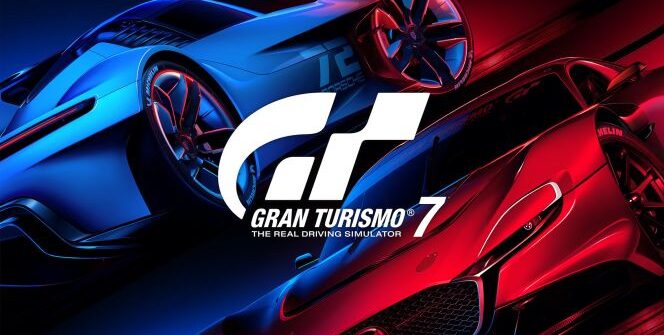
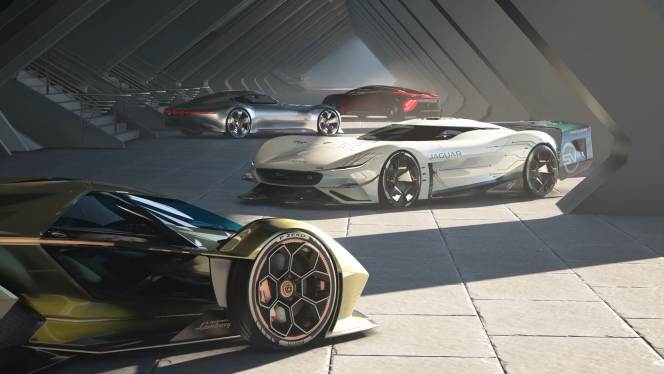
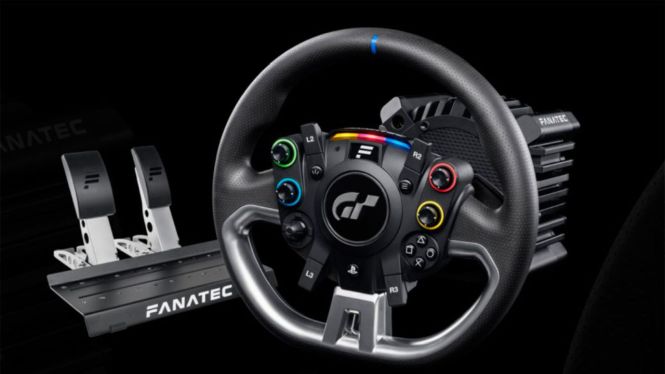
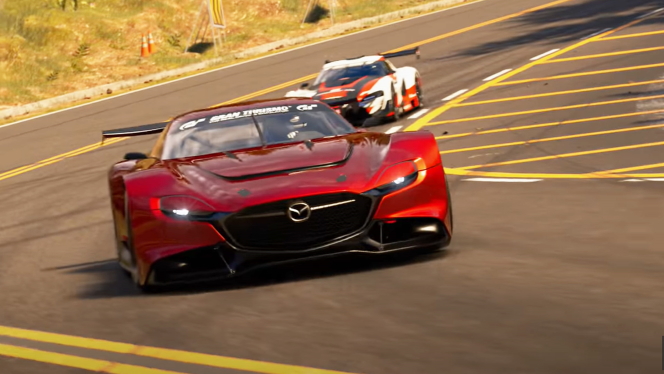
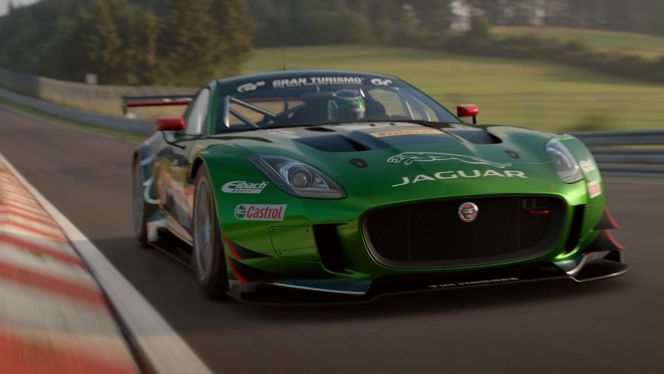
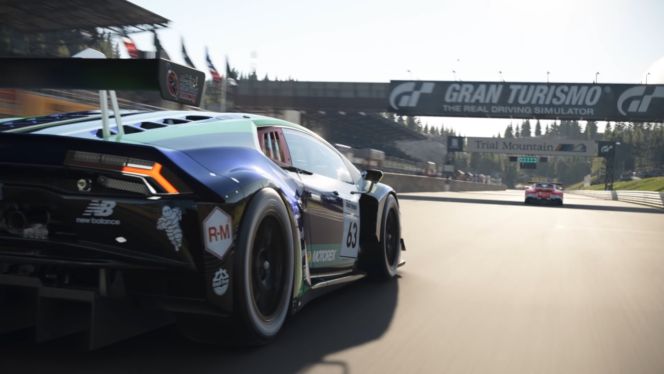
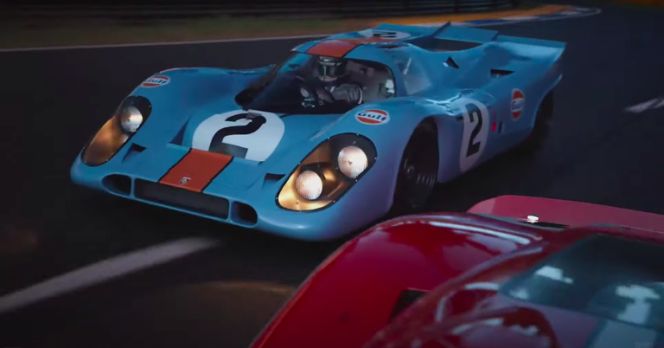
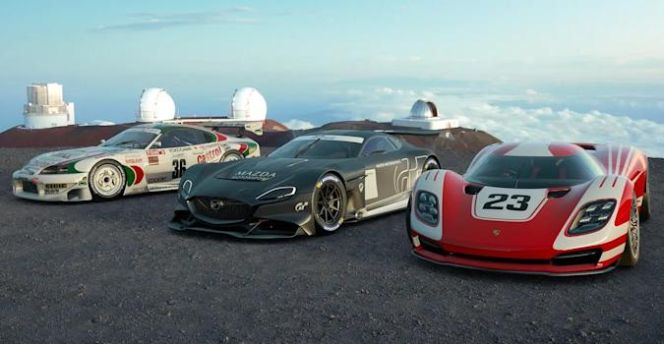
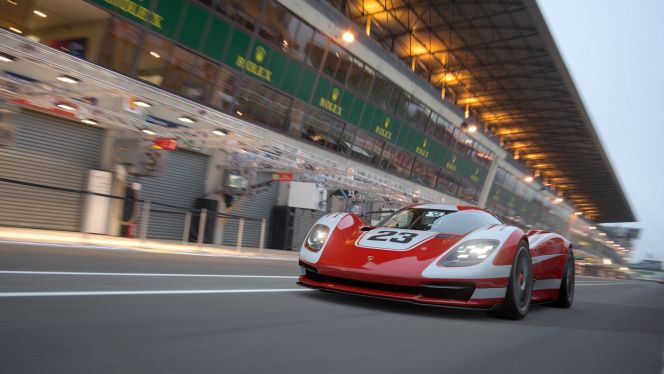
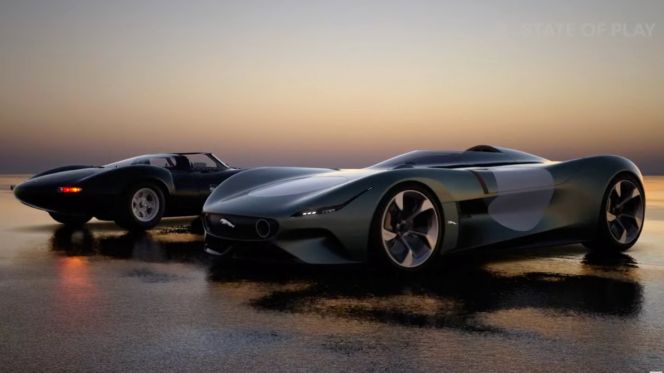














Leave a Reply